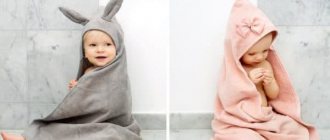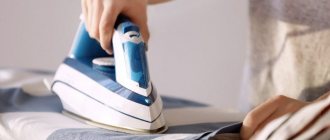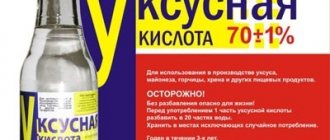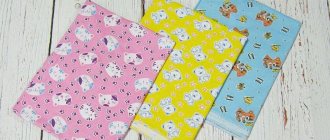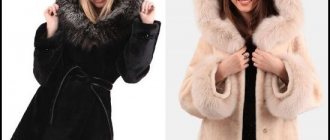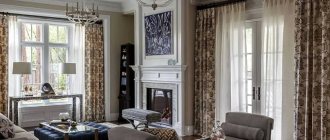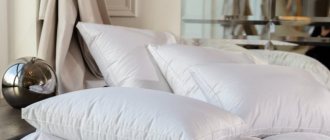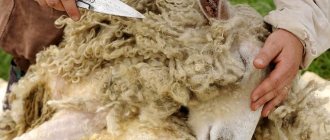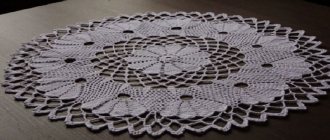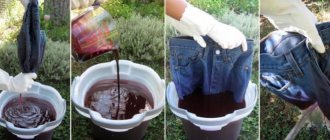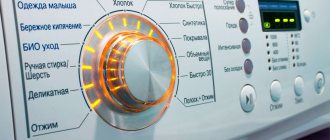Types of towels
Supermarket shelves will greet you with orderly rows of folded towels. But in order not to get confused in definitions, the first thing you should do is get acquainted with the classification of textiles. It is based on the purpose of the product.
Beach towel.
Huge products with bright, memorable designs. Such towels should be lightweight and perfectly absorb moisture, so that they are not difficult to carry with you, and after bathing you can easily warm up.
A bath towel
. Soft, warm, fluffy - you can wrap yourself completely in it if you suddenly don’t have a robe nearby. Body towels are almost always made of cotton, so such products are heavy and take a long time to dry. Despite the name, these products are used not only in the bathhouse or sauna, but also at home.
Towels for hands and feet.
We use them most often: after every hand washing. And in hotels they even throw terry products on the floor next to the shower stall so that the guest does not step bare feet on the cold tiles.
Facial towel
. Small, but always soft so as not to injure delicate skin. The main requirement for facial products is gentleness and hypoallergenicity.
Massage towel
. They are most often made from linen, sometimes with the addition of cotton. It gets wet quickly, takes a long time to dry and is not able to give that comfort to which soft terry products have taught us. Still, a linen towel is something special! They need to wipe themselves vigorously, like with a washcloth. But the effect is comparable to a light massage: blood flow improves, muscle and ligament mobility increases.
Towel or wedding towel.
After the rituals, it is customary to carefully store these products for life. Therefore, what comes to the fore is not practicality, as in bath towels, but beauty: hand embroidery, hemstitching, appliqués are almost obligatory elements of wedding textiles.
Kitchen towel
. A terry or waffle towel is the smallest in size. For their production, flax or cotton is traditionally used, since the product will have to interact not only with water, but also with fat. This means that it will need to be washed at the highest possible temperatures and synthetic threads simply will not withstand this.
Each person in the family must have a minimum set of towels: 2 face and shower towels, 1 bath and 1 beach. The minimum required amount of textiles for general use: 4 hand and foot towels, 3 kitchen napkins.
Baby towel
. The product for babies usually has a double-sided terry weave, so moisture is absorbed instantly. Boys and girls really like the bright design and images of their favorite characters, and mothers and fathers select special models with a hood for their children so as not to catch a cold in their ears after swimming.
Preschool children need more towels than adults. Acceptable minimum: 10 toilets, 2 facials, 2 foots and 2 hooded showers.
Variety of types and their purpose
The towel itself has been known to people since ancient times and, in its homespun version, has accompanied them for hundreds of years. Essentially, it is a simple piece of fabric or paper that absorbs moisture well. In principle, its removal from the surface of the body can occur due to absorption or removal through friction and other mechanical action.
There are kitchen towels, cosmetic towels, massage towels and others. In our context, a bath towel is more interesting. They differ according to many criteria, the main ones of which we will consider.
Once upon a time, quite a long time ago, we already completed a classic set for going to the bathhouse. For those who don't like bulky bath bags, one universal towel was quite enough. Those who approach the business of visiting the bathhouse more thoroughly completed the set with two products - one for the body, the other for the hair.
| Purpose of the towel | Geometric dimensions, cm. |
| A large towel, known in bathhouse usage as a “sheet” | 200×80 and more |
| Classic for body wrapping, in bath slang “toga” | 150×100 and 160×90 |
| Medium or “shower” | 140×70 |
| "Small shower", known as "half-shower" | 100×50 |
| "Toilet" | 85×50 and 90×50 |
| If the bathhouse is equipped with a kitchen and a feast after the steam room is commonplace, a “kitchen” towel is used | 70×50 |
| “Small kitchen”, which is often placed on the lap during meals | 50×30 |
| Small toilet towel or “blotter” in bath slang | 40×30 and 30×30 |
In practice, you can also find the “Italian” standard for a large towel, which is 150x90 cm, and the “German” standard, this one is larger - 180x90cm.
It seems quite obvious that for a bath, products made from the most natural raw materials are very preferable. However, such materials do not always provide 100% functionality. So:
- Linen towels, for all their positive qualities: the absence of allergic reactions to fibers, good permeability, moderate heat retention and sufficient hygroscopicity, are somewhat harsh in purely tactile sensations when in contact with the body. This feeling is especially intensified after washing the product. However, pure linen towels are popular in massage and spa salons at bath complexes, where they are successfully used for light and delicate peeling of steamed skin. They are also revered by lovers of “hard baths”: with high temperatures in the steam room, ice douches, and spruce brooms. Against this background, the bath towel should be appropriate;
- Waffle towels have a harsh and dry surface structure, especially when the product is new or dry after washing. They absorb moisture satisfactorily, look modest, and are compact. They are moderately popular in bathhouses, nothing more;
- Velor are very elegant products, with a beautiful play of light under various types of artificial and natural lighting. They look expensive both externally and on the counter. They retain heat well, but almost exclusively due to low permeability. Inferior to competitors in terms of moisture absorption quality. Item from the theme: “Burst, but keep it in style.” Not as popular in bath use as manufacturers would like;
- Jacquard towels belong to the class of products in which appearance prevails over consumer qualities, primarily due to the relief texture. It also plays some negative role in reducing the hygroscopic properties of such a product. In practice, it is jacquard that acts as the main material for such bath items as a sauna towel;
- Terry towels, like the terry robe, are one of the timeless classics of the bath genre. The price-quality ratio of such products is close to ideal, and a large selection of colors and patterns allows you to satisfy the tastes and preferences of the most demanding users;
- Bamboo - stand at the top of the hierarchy of these bath items. They have an increased ability to absorb moisture, sometimes especially high-quality specimens; their hygroscopicity is 350% higher than an ordinary linen product. They have a very soft and delicate texture, which has a very positive effect when used by people with sensitive skin.
Color spectrum
As in the case of dressing gowns, the most durable and practical are products in soft pastel colors that do not have sharp transitions in the color palette. The most resistant to loss of saturation are red, orange and yellow. Violet and blue colors lose depth and quality faster.
1. A bath towel is used on the body after a shower, bath or sauna. Such products should absorb moisture well and keep you warm. Materials should be soft and delicate. Terry, cotton and bamboo products of large sizes would be a suitable option;
2. Kitchen products collect large amounts of dirt, grease and dangerous bacteria. Therefore, you need to choose a durable and reliable material that can easily withstand repeated washing, boiling and regular use. The fabric must be resistant to dirt and germs and absorb well. For the kitchen, waffle and linen models are chosen;
READ MORE: 10 best types of lawn grass names and descriptions with photos and recommendations
3. A washcloth or face towel should be soft and comfortable to wash, because it comes into contact with delicate skin. In this case, choose medium or compact sized canvases made of cotton or bamboo;
4. Choose items for your feet and hands that are compact in size with good absorbent properties and are resistant to stains. Be sure to use a separate guest hand towel for the bathroom;
5. Baby towels are used for newborns and small children. They are distinguished by soft and delicate fabric with double-sided terry weaving, bright patterns, high absorbency and a comfortable effect on the skin. Some models are made with a hood;
6. The beach towel should be large enough to comfortably sunbathe on it. In addition, it should be pleasant to the body and absorb moisture well in order to dry off after bathing;
7. Massage products are also chosen large. A specially calculated proportion of linen and cotton is designed to relax, soothe and provide a comfortable massage;
8. Wedding towels or towels are used as gifts for newlyweds. Such products are made from linen, silk or satin and decorated with embroidery, ribbons, beads or ornaments. Towels are a symbol of a prosperous family life and are used in wedding ceremonies.
Towel sizes
The purpose of the products also influenced their size. Today, towels have a generally accepted size range, which may vary slightly from one manufacturer to another.
| Type of towel | Size in centimeters |
| Kitchen | 30x30 30x50 |
| Facial | 40x60 50x85 50x90 |
| For arms and legs | 50x100 |
| Bath | 70x140 100x150 |
| Beach, massage, sauna | 70x180 80x200 90x160 100x150 |
Types of fabrics
Both natural and synthetic fabrics are used to make towels. Not all of them will meet your expectations, so you should carefully study all the pros and cons of the material in advance.
Natural materials
Cotton.
Durable, environmentally friendly and the most familiar type of towel for us. Such products perfectly absorb moisture and do not cause allergies. Therefore, they can be safely recommended to children and pregnant women. The advantages of cotton towels are strength and durability. The downside is a lot of weight, especially when wet.
Cotton towels are available in several variations:
- Mahra
. You can recognize the material by its long, soft loops. Terry products are soft, warm and very heavy. - Velor
. The loops in this version are cut, due to which the fabric acquires additional softness, but absorbs water much worse. - Waffle fabric
. A rigid material with a recognizable honeycomb-like structure. Waffle fabric is used to sew kitchen towels. - Jacquard
. These towels are easily recognized by the alternation of areas with and without lint. Jacquard products are beautiful and much lighter than terry ones.
When purchasing a cotton towel, pay attention to the country of origin. The best products are imported to Russia from Egypt and Pakistan.
Linen.
Durable and breathable fabric. At the same time rough and tough. It’s difficult to get used to it; adherence to such products is rather a tribute to fashion, which today is dominated by ethnic motifs and environmentally friendly materials.
Bamboo
. It has a cooling effect, which is very useful for bath models. Absorbs moisture twice as efficiently as its cotton counterparts. Bamboo towels are very pleasant to the touch and can compete with natural silk or cashmere in softness.
The antibacterial properties of bamboo fiber are just a publicity gimmick. Indeed, bamboo wood kills germs. But after chemical treatment of the fibers, not a trace remains of the miraculous properties.
Modal
. Like linen, cotton or bamboo, modal is a 100% natural material. The raw material for it is eucalyptus or beech cellulose. These towels absorb moisture 50% faster than cotton products. And they are significantly superior to the latter in softness. Modal could be called an ideal option, if not for the high price and too small selection of products in stores.
Tencel
. Natural material woven from eucalyptus fiber. It is very durable, hygroscopic and hypoallergenic. Thanks to the amazing softness of eucalyptus cellulose towels, you can safely buy them even for newborns. Well, housewives will appreciate the strength of the material, which does not tolerate frequent washing at a temperature of 90 0C.
The best towels are made from a blend of natural fibers. For example, the inclusion of bamboo fibers gives the product pronounced antibacterial properties. Adding flax will extend the life of the towel.
Synthetic and mixed materials
Polyamide. Synthetic fabric is highly electrified and does not absorb moisture well. At the same time, such towels dry quickly, retain their original colors for years and delight with their bold design.
Polyester
. Another synthetic material, the result of oil refining. Like most man-made fibers, it does not absorb moisture well. But it is distinguished by lightness, durability and the lowest possible cost.
Microfiber or microfiber
. Mixed fabric, soft and delicate to the touch. These towels are capable of absorbing a huge amount of water, so they can show themselves in all their glory on the beach, in the sauna or pool. The main disadvantage of microfiber is its short service life and the need for delicate washing.
The information on the label is not always reliable. Therefore, to determine the presence of synthetic fibers in a towel, just pour a little water on the glass surface and try to wipe it with a towel. Are there any divorces left? This is a mixed or synthetic product.
The summary table will help you finally decide on the choice of material for bath accessories.
| Characteristics of towels | ||||
| Ease | Strength | Softness | Absorbency | |
| Cotton | — | +++++ | ++ | +++ |
| Linen | + | +++++ | — | ++++ |
| Bamboo | +++ | +++ | +++++ | +++++ |
| Modal | +++ | +++ | +++++ | ++++ |
| Tencel | +++ | ++++ | +++++ | +++++ |
| Polyamide | ++++ | +++++ | ++++ | + |
| Polyester | ++++ | ++++ | +++ | + |
| Microfiber | +++++ | ++ | +++++ | +++++ |
Another way to detect the presence of synthetic fibers is to examine the fabric under the sun. Cotton will remain matte, synthetics will show glare and shimmer.
Decorating Kitchen Towels: Suitable Art Techniques
In textile factories, they use standard dimensional grids approved many years ago, which help reduce waste, take into account the features of production machines, and also reduce production costs.
In addition, standard sizes meet all customer requirements and are used not only at home, but also purchased for trips to the beach or to the bathhouse. The size range is quite varied:
- 30X30 (another name is a kitchen napkin, used for household needs);
- 35X70 (intended exclusively for home use, more often used as a baby wipe);
- 50X70 (canvas for feet or as a terry mat after getting out of the shower);
- 50X100 (average size of a bath product, used for the face or hands, and also used in fitness rooms);
- 70X140 (a large product that can absorb moisture after procedures in water, used in bathrooms, saunas, baths or swimming pools);
- 150X100 (beach sheet, used not only to absorb moisture from the body, but also an excellent solution for laying on a couch or just on the sand).
In the approved GOSTs, some deviation from the standard dimensions is allowed. That is why products, depending on the manufacturing factory, may vary slightly in length or width.
Some factories provide the service of sewing towels according to individual customer sizes.
Before buying new towels for the bathroom, you should decide on its purpose. Only after that can you safely pay attention to the size range presented in stores. So, for example, if a towel is needed to wipe your hands or face after washing, a size of 50X90 or close to it is suitable. It is convenient to hang such a product on a hook near the sink and use it when necessary.
If you need a large towel for drying after a shower, bath or swimming pool, you should not skimp on the purchase. It is better to purchase a long and wide cloth, pleasant to the touch, in order to quickly and comfortably dry off after the bath procedure.
You should also pay attention to a number of criteria that are considered important, along with the size of the product:
- softness (at the time of purchase, this is the first characteristic that the buyer pays attention to; if it is hard, they are unlikely to buy it, in this case you should pay attention to the composition, natural materials are preferred);
- pile (experienced housewives choose products with a pile length of at least 5 mm; too long piles will quickly take on an unpresentable appearance after several machine washes, and a towel with too short a pile will poorly absorb moisture and quickly get wet);
- absorbency (ideally, the fabric should quickly absorb moisture without leaving streaks; this can only be achieved if the material is natural; towels made from Pakistani or Egyptian cotton are considered the best, but labels often do not provide comprehensive information to the buyer);
- density (the shelf life of any towel is 3 years; how dense the product is will determine whether the terry product will last these years or will become unusable much earlier, so you should choose thick, high-quality terry sheets).
A properly selected and high-quality item will delight your home with its softness and good absorbency. A variety of beautiful ornaments and designs will help to complement the chosen interior in an original way.
Unfortunately, not all products that can be found on store shelves are of good quality. In this regard, when purchasing a product, take a closer look at its label and appearance.
- Waffle fabric frays a lot at the edges, so the towel should have stitching or special impregnation around the perimeter. Threads sticking out of the seams are a sign of poor quality sewing.
- The canvas should not contain visible defects or seals.
- Study the label. If it says “100% cotton,” the towel is completely natural; if it says “PC,” it contains synthetics. Formally, the presence of artificial fibers is allowed no more than 20%; manufacturers add them to reduce the cost of the product. Such manipulations negatively affect the ability of waffle kitchen towels to absorb water, so opt exclusively for a natural product.
- Uniform color is a good sign. The paint should not remain on your hand when running over the towel.
- No unpleasant, chemical aroma.
Make purchases only from trusted suppliers who guarantee the quality of the products sold. The Sweet Home online store works directly with well-known Turkish and domestic textile manufacturers, so you get quality at a reasonable cost.
You can sew a kitchen towel of a suitable size and with a suitable pattern with your own hands
When making this type of product yourself, you should consider:
- colors;
- textile;
- holder type;
- manufacturing technique;
- and, of course, sizes.
You can make towels of any size and shape. However, there are several standard options.
Experienced housewives make a choice in favor of a rectangular piece of fabric 30x60cm or 40x70cm. Please note that to create such towels you need to cut the material with a margin of 0.5-1 cm per seam on each side.
Weekly set of towels “Children’s menu” size 35x60 cm
Set of kitchen towels (waffle and terry) size 40x60 cm
However, sometimes the gap is neglected. If you are going to decorate the edges with braid, fabric of a different shade, or knitted lace, you don’t have to reserve the size.
Tapestry round towel “Lavender”, edged with purple braid - a beautiful non-standard option
In matters of shape and size, it is better to adhere to accepted standards, showing your individuality and creativity in the selection of shades, material, decor, and type of holder.
Towels are one of the important decorative components of the kitchen interior
Cute bells to decorate a kitchen towel
Here it is permissible to show imagination. There are several most common handicraft techniques that are appropriate in this case.
- Embroidery
Beautiful kitchen towels with embroidery
Satin stitch, cross stitch, and ribbons work well. The main thing is to choose sufficiently strong and stable threads of harmonious shades, find or come up with a design.
READ MORE: Baby towels 39 photos features of products for newborns size of terry and bath towels for children
The color of the embroidery should match the fabric from which the towel is made. And with a color scheme for the kitchen interior. With shades of tiles on the walls, furniture fittings, tablecloths and curtains.
Handmade towel with embroidery and lace “French Breakfast”
Any design is acceptable, but more often they use: plant motifs, ethnic ornaments, images of vegetables, fruits, animals.
A kitchen towel in a patchwork technique will become a bright and stylish accessory in the kitchen.
Patchwork is the creation of textile products from individual scraps. Masters of this technique make entire paintings this way. And while it may not be practical to turn a kitchen towel into a work of art, it is perfectly acceptable to decorate it a little and give it a little personality.
For example, you can make a multi-colored border around the edge. This looks unusual and attractive, and makes the towel more durable. A good solution is to make a decorative and practical holder from scraps.
Beautiful kitchen towel with ruffles and patchwork appliqué
- Crochet tying towels
with openwork border
The hook is a universal tool with a wide range of capabilities. In this case, you can use it to make a spectacular lace trim around the edge of a towel, as well as a reliable and beautiful holder. It is only important to choose good threads that are strong enough, do not fade, and are in harmony with other elements of the kitchen design in color.
A set of kitchen towels decorated with decorative crochet binding
Neat, elegant, unusual decoration of kitchen accessories with your own hands can give the room additional comfort and originality.
DIY kitchen towels with loops and borders
How long should the pile be?
At first glance, the longer the pile, the better the towel. Indeed, loops with a height of 8 mm or more give the product warmth and softness. However, such models do not tolerate regular washing and quickly lose their attractive appearance. Very short pile (less than 3.5 mm) is also bad: such towels absorb moisture less well and become stiff after a couple of months.
The optimal length of the pile is 5 mm. It guarantees good moisture absorption and wear resistance. The only exception is children's models. Softness and warmth are critical for them, so kids should buy long-pile towels.
Quality of towels
The level of your daily comfort depends on the quality of the towel. A good bath towel will be soft, pleasant and light.
If you look closely at the surface of, for example, a terry version, you can see many thread loops. A lot depends on their length:
- if they are too short (about 2 mm), the towel will be hard;
- too long loops (8 mm) will add softness, but will play a disservice later - after several washes the towel will look untidy;
- The optimal length of loops or pile is 5 mm.
Some manufacturers indicate the density of the material on the labels; it is indicated in grams per m2. Arm yourself with the following knowledge:
- up to 350 - a very thin towel, it will quickly get wet, but also dry quickly - a suitable option as a hand towel;
- 350-500 - optimal density, good absorbency, quick drying - a good choice for the bathroom;
- more than 500 - very dense, heavy towels, suitable for baths, soft, absorb well, but take a long time to dry in natural conditions.
A few more words about quality. Pay attention to the seams. A well-made towel will have tight, perfectly even seams, preferably double ones. There should be no snags or protruding threads on the pile or terry itself.
What remains to be added? You should like the appearance of the towel: it doesn’t matter whether it’s snow-white or non-staining gray. Practicality also plays a role, but is it really worth giving up aesthetic pleasure in such trifles?
READ MORE: Weigela Nana purpurea 28 photos of what a blooming weigela looks like Description of planting and care rules What size will it be
Selecting density
The density of a terry towel is the number of fibers in grams per square meter of area. The indicator indicates the product’s ability to absorb moisture and the wear resistance of the model.
Towels density:
- < 400 g/m2 does not absorb moisture well;
- > 600 g/m2 are inconvenient to use due to their heavy weight;
- 450–600 g/m2 – optimal in all respects.
Other standards apply for kitchen towels: the best density for them is 320 g/m2.
Types of weaving
Depending on the method of weaving the threads, towels are divided into the following categories:
- Terry towels. They are woven in four threads, small loops are formed on the surface of the fabric, which gives volume to the product. Terry towels are soft, absorb moisture well and are easy to wash.
- Velor towels. They are also woven in four threads, while the terry is cut. These towels are smoother, but absorb moisture a little worse. Velor towels are great for your face.
- Waffle towels. In the case of this type of towel, weaving is used, as a result of which squares or diamonds are formed on the surface (like on waffles
